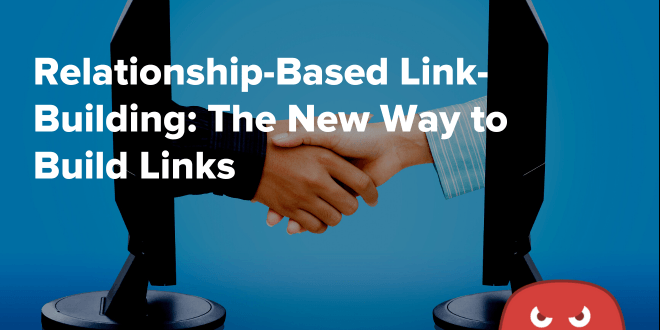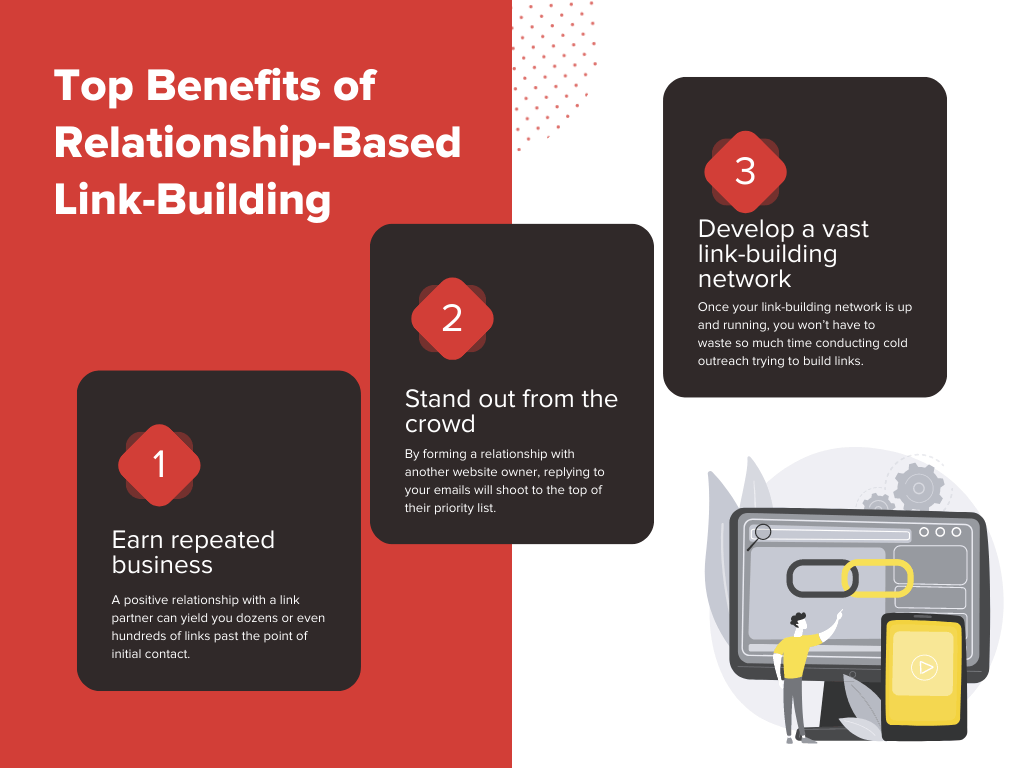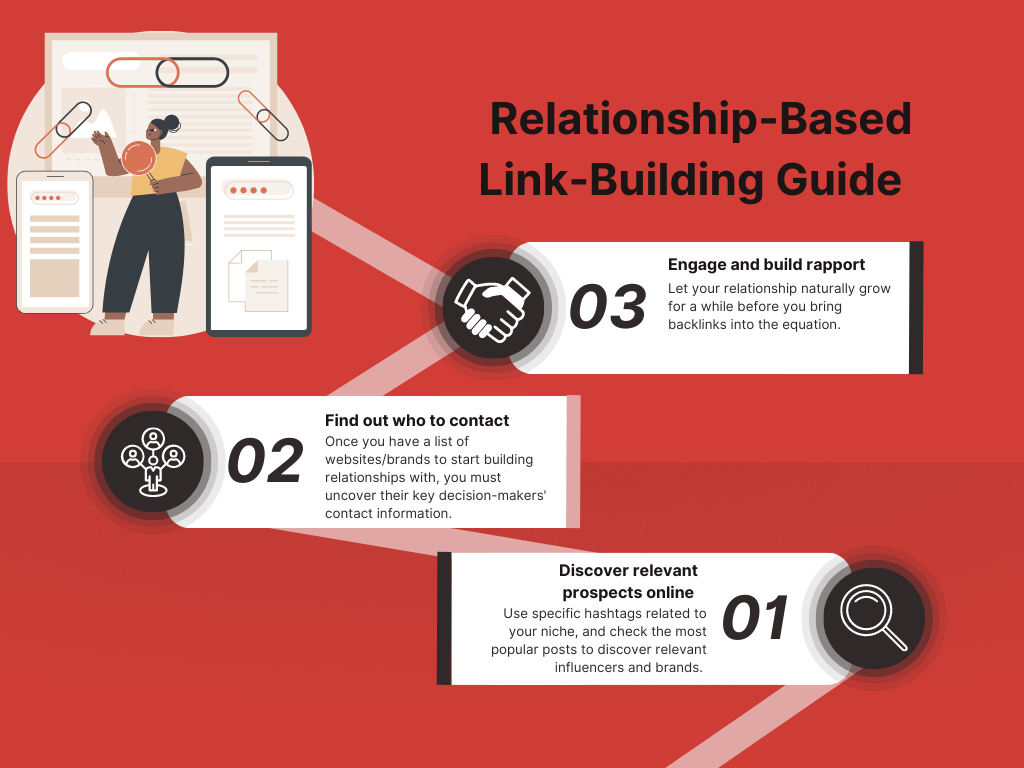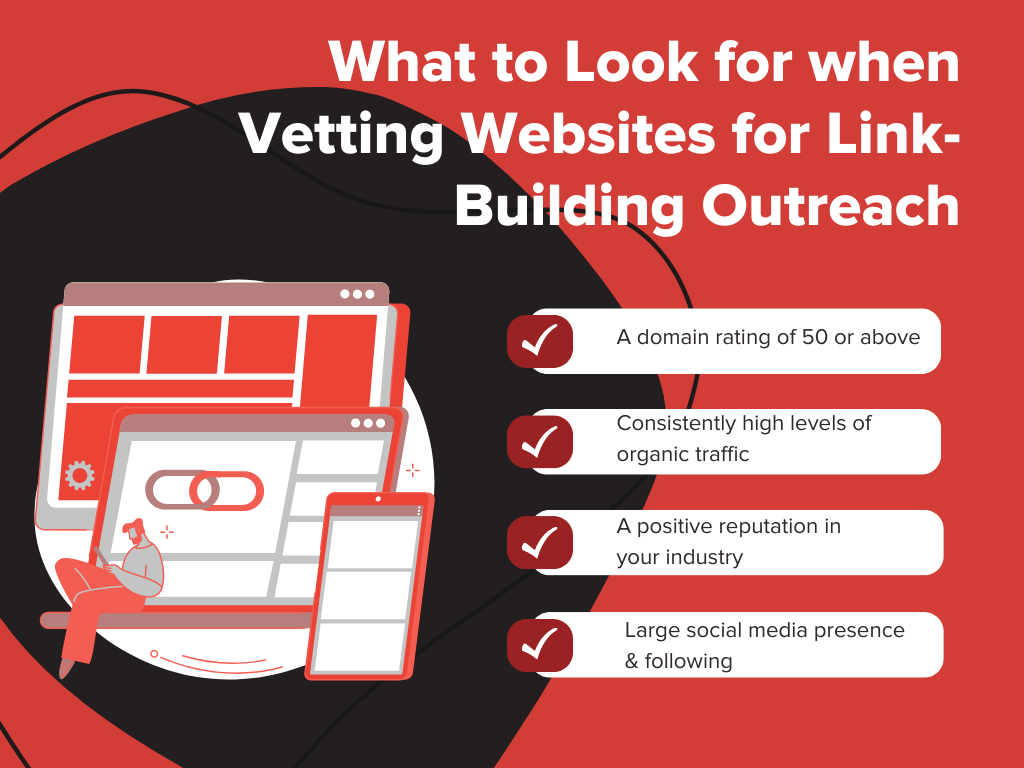Quick Links
It’s no secret that traditional link-building techniques involve lots of cold outreach to website owners, but just how effective are they?
Here are a few eye-opening statistics on cold outreach emails:
- The average response rate to cold emails is a measly 8.5% (which translates to roughly 8 replies for every 100 emails sent).
- The average open rate for cold emails is only 23.9%.
- 50% of cold email outreach campaigns contain a response rate of under 10%.
So if you’re still spending hours sending generic outreach emails you got from a template, you need to find a new way to build links, especially in today’s age.
While basic outreach email templates were perfect for the early 2010s, many website owners have grown tired of random backlink requests filling up their inboxes.
As a result, it’s become increasingly more difficult to obtain high-authority backlinks with a DR (domain rating) of 50 or higher with cold outreach methods.
The solution?
You should engage in relationship-based link-building instead of conducting cold outreach to dozens of random site owners.
It involves focusing on building positive, long-lasting relationships with other brands, influencers, and thought leaders in your niche.
Relationship-building is so effective in this regard because it will help you generate many desirable backlinks through personal connections.
Read on to learn how to leverage this new way to build links for your website.
Is Relationship-Based Link-Building Really Worth It?
First, let’s compare relationship-based link techniques with traditional link-building tactics.
Going the standard route, you would either spend countless hours cold emailing random website owners or you would outsource the work to someone else.
Either way, you’ll inevitably end up wasting most of your time considering the statistics mentioned in the intro.
For example, if you work your butt off and send 100 emails in a day, you’ll likely only receive a handful of replies if you’re lucky – and even that’s no guarantee of a link placement.
Not only that, but random outreach tends to only work for low-DR backlinks (50 or below), which won’t have that much impact on your SEO profile – even in higher quantities.
When it comes to link-building, links from reputable, trusted websites with high domain ratings have the most impact.
How do you get those?
The best way is to focus most of your energy on forming relationships with the site owner and key decision-makers at the business/website.
If you’re able to form a partnership with one of the leading websites in your industry (think DR ratings of 80 and above), you’ll see a far more positive impact on your SERP rankings.
Not only will you land backlinks from their site, but you can get connected to their pipeline of other high-authority sites, too.
Besides making it easier to acquire high-authority backlinks, relationship-based link-building provides many other benefits, so let’s take a look at the cream of the crop.
Earn repeated business
Arguably the biggest benefit of forming link-building relationships is the ability to keep obtaining high-authority links well into the future.
Instead of getting a one-and-done backlink from a random email, a positive relationship with a link partner can yield you dozens or even hundreds of links past the point of initial contact.
For instance, let’s say that you form a lasting bond with one of the top websites in your industry.
It starts with you offering a backlink placement on your website for one of their posts. From there, the two of you regularly trade guest posts for more traffic and brand awareness.
After that, you start to share your best link sources with one another, granting you even more backlink opportunities.
The fact that one partnership can lead to so many desirable links is one of the top reasons why relationship-based link-building is more than worth your time.
Stand out from the crowd
The last thing a website owner wants to see in their inbox is another generic email template requesting a backlink.
More often than not, your message will likely blend in with the other spam and cold outreach emails in your prospect’s inbox, causing them to ignore it.
This is another reason why forming relationships is the superior link-building option.
Think about it, who would you reply to first – a trusted colleague that you work with to build links or some rando that didn’t even mention your company name in the subject line?
By forming a relationship with another website owner, replying to your emails will shoot to the top of their priority list.
Even in the early stages of forming relationships, a friendly, personalized email is more likely to receive a response than a generic template.
Develop a vast link-building network
The more connections and partnerships you can form for your link-building strategies, the better.
If you can rub elbows with the top thought leaders in your field, developing a rock-solid backlink profile for your website will be a breeze.
While it’ll certainly take some time to build such a network, once it’s up and running, you won’t have to waste so much time conducting cold outreach trying to build links.
Relationship-Based Link-Building Guide
Now that you’ve seen the light on the new way to build links, it’s time to learn how to start forming link-building relationships in your niche.
Just like traditional link-building methods, it starts with finding and vetting relevant prospects online.
From there, you need to engage each prospect and start building the relationship.
Another great way to break the ice and kickstart your correspondence is to be generous and offer something valuable from the get-go.
Here’s a closer look at each step of the process.
Discover relevant prospects online
You need to uncover companies and websites in your industry to form relationships with, and there are several ways to do so.
Also, you should be picky about who you choose to correspond with, as not all sites in your niche will be worth reaching out to.
Here are the criteria you should look for when vetting websites:
- A domain rating of 50 or above
- Consistently high levels of organic traffic
- A positive reputation in your industry
- Large social media presence & following
To ensure that a website is able to tick all these boxes, you can use our free SEO Audit Tool.
It will provide all the key SEO metrics that you need to determine if it’s worth pursuing a relationship with the site owner or not.
If you aren’t sure who the top thought leaders are in your field, you can take to social media platforms like Instagram to find out.
Enter specific hashtags related to your niche, and then check the most popular posts to discover relevant influencers and brands.
Another option is to analyze your competitor’s backlink profiles to see if they have any powerful connections that you’re lacking. You can use our free Backlink Checker Tool to view the link profiles of the websites currently outranking you on the SERPs.
Check to see if they have any backlinks from prominent brands with high DR scores. If so, it could be worth reaching out to them so you can start building relationships of your own.
Find out who to contact
Once you have a list of websites/brands to start building relationships with, you must uncover their key decision-makers’ contact information.
Instead of digging for webmaster email addresses, try to reach out to CMOs, SEO Managers, Link Builders, and Content Strategists on social media. In particular, look for their LinkedIn profiles and Twitter handles.
Engage and build rapport
Remember, you’re not there to shamelessly beg for a backlink on your first point of contact with a new prospect.
Instead, you’re there to engage and interact with them to start building rapport.
Start reading their LinkedIn and Twitter feeds to get a feel for their interests and the type of content they publish.
After that, comment valuable insights on their posts to encourage conversation.
Don’t be too eager to introduce the idea of being link partners, either. Let the relationship naturally grow for a while before you bring backlinks into the equation.
Another tactic is to offer them something of value without expecting anything in return. For instance, you could reach out to a website offering them a backlink simply because you really enjoy their content.
Not only can this lead to a backlink in return, but it’s also a great icebreaker to begin building a relationship.
Embracing the New Way to Build Links
Relationship-based link-building is a long-term game, but its payoffs are immense.
By forming relationships with valuable link partners, you will enjoy a steady flow of high-authority backlinks without having to dedicate countless hours to cold outreach.
Not only that, but you’ll build brand awareness and generate more targeted organic traffic by rubbing elbows with the most influential people in your field.
Do you not have time to engage in relationship-based link-building?
Then you need to check out our Link Outreach and Link Insertion Services from The HOTH.
Our digital marketing agency has powerful established relationships with industry leaders in many fields, and we have what it takes to significantly boost your brand’s online visibility – so don’t wait to get in touch today.












nice blog like it
very informative